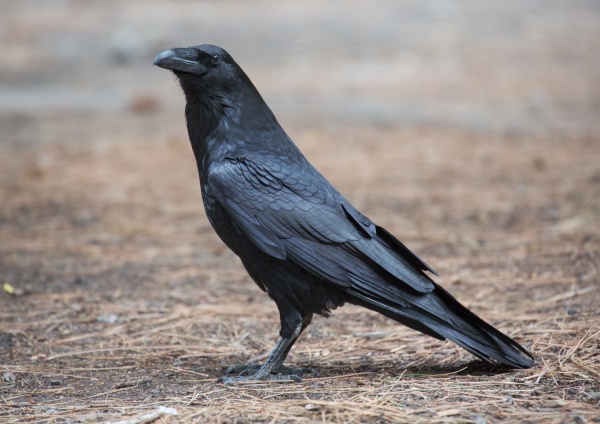Facts About Common raven
The common raven, scientifically known as Corvus corax, is an impressive all-black bird found throughout the Northern Hemisphere. Also referred to as the western raven or northern raven, depending on the subspecies, it is the most widespread member of the corvid family, boasting at least eight different subspecies. Renowned for its intelligence, problem-solving abilities, and adaptability, the common raven has coexisted with humans for millennia, though its omnivorous diet and scavenging habits sometimes lead to it being labeled as a pest.
The English word "raven" shares roots with other Germanic languages, stemming from the Proto-Germanic word *khrabanas*. This bird has close relatives such as the brown-necked raven, pied crow, and Chihuahuan raven.
Evolutionary research suggests that common ravens originated in the Old World and migrated to North America via the Bering land bridge. Genetic studies reveal distinct groups within the species, with notable genetic differences between California and Holarctic populations. Common ravens are easily recognized by their large size, unique appearance, complex vocalizations, and playful nature.
These birds thrive in a variety of climates, ranging from Arctic regions to temperate zones and even deserts. They prefer wooded areas with nearby open land or coastal regions for nesting and feeding. Common ravens exhibit fascinating behaviors, such as forming lifelong pairs, defending their territories, and engaging in sophisticated problem-solving. They are both predators and scavengers, showcasing remarkable intelligence.
The relationship between ravens and humans is complex. While revered in many cultures and mythologies, ravens have also posed challenges for conservation and management. In some areas, they are considered pests, causing damage to crops and livestock, leading to efforts to control their populations through culling and habitat management.
Culturally, ravens hold powerful symbolism in myths and folklore across the Northern Hemisphere. They are often associated with themes of death, wisdom, trickery, and creation. Ravens appear in literature, art, and religious texts, symbolizing omens, messengers, and creators.

 Syria
Syria